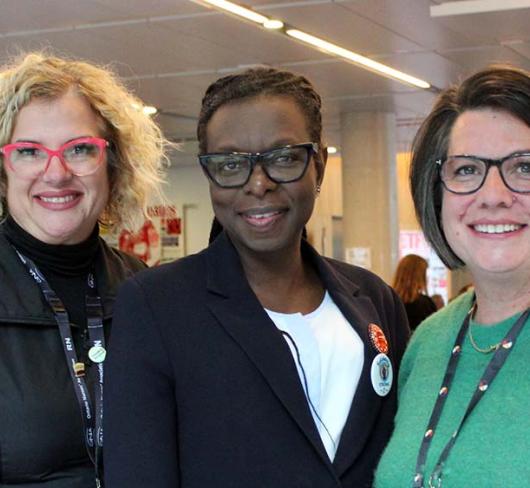March 8 International Women’s Day (Equity and Women's Services)
Each year on March 8, International Women’s Day (IWD), we celebrate the ongoing struggle of women to achieve legal and economic equality and freedom from violence. The astonishing positive transformations in women’s lives in the last four decades, the gains of rights, freedoms, and possibilities for some women in some parts of the world, are cause for rejoicing. The profound oppression of women in other parts of the world remind us all that the need for women’s activism is undiminished. International Women’s Day has its roots in the international labour, socialist, and peace movements that were so powerful early in the twentieth century. IWD is a national holiday in many countries. The United Nations began celebrating IWD on March 8 in 1975, during International Women’s Year. Like Labour Day, International Women’s Day provides a focus for necessary activism on several issues: equal pay, political representation, child care, economic justice, violence against women. The safety of Aboriginal women and girls in Canada is an urgent issue. Statistics consistently show that Aboriginal women face much higher levels of violence than all other women in Canada. The Native Women's Association of Canada has documented more than 600 cases of Aboriginal women and girls who have been murdered or who remain missing. This violence has touched the lives of almost every First Nations, Inuit and Métis family and community. And it has moved Canadians from all walks of life to demand action. Violence against Aboriginal women and girls is a national issue, one that must concern us all. We welcome the investigation into this tragedy, and call on federal and provincial governments to take effective action to keep all women in Canada safe.
For more information on International Women’s Day:
- www.internationalwomensday.com is the global hub for sharing International Women’s Day news, events and resources. Its theme for 2012 is “Connecting Girls, Inspiring Futures.” Follow IWD on Twitter: 8 March 2012 @womensday.
- Status of Women Canada (www.swc-cfc. gc.ca/dates/iwd-jif/index-eng.html) produces material (posters, fact sheets) and an organizers’ handbook for IWD activities. The theme for 2012 is Strong Women, Strong Canada— Women in Rural, Remote and Northern Communities: Key to Canada's Economic Prosperity.
For more information about Canada’s missing and murdered Aboriginal women, check out these Web links:
Stolen Sisters – Amnesty International Canada (www.amnesty.ca/campaigns/resources/amr2000304.pdf) Outlines the objectification of Aboriginal women in Canada and introduces the public to Indigenous women’s experience of violence through narrative and statistical information.
Project of Heart – Residential Schools http://projectofheart.ca http://poh-curriculum.wikispaces.com http://poh-curriculum.wikispaces.com/file/detail/Residential_Schoolshandout2.pdf Artistic tools and projects used to connect non-Aboriginal students to the experiences of Canada’s Indigenous people and the residential school system—including resources for teachers, on themes of art, math, science, history and social issues.
No More Silence - http://nomoresilence-nomoresilence.blogspot.com/ A group committed to developing an international network to support the work of activists, academics, researchers, agencies, and communities to stop the murders and disappearances of Indigenous women.
First Nations Women Rising - http://ourtimes.ca/Features/article_143.php Article by Janet Nicol in Our Times magazine.

